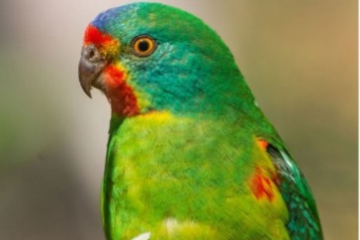Fruit of the Ficus genus is a favourite food of Flying-foxes and the figs, themselves, are worth a second look.
In the Sydney region, two of the common fig species are Ficus macrophylla (Moreton Bay Fig) and Ficus rubiginosa (Port Jackson Fig). The Moreton Bay Figs in Sydney itself have mostly been planted, this Fig occurring naturally north and south of the area.
Figs have a fascinating life-style. “They are peculiar in not having their flowers exposed, like most flowering plants, but concealed within a hollow, urn-shaped receptacle which has precisely the appearance of a young fruit”.*
Each species is pollinated by a specific wasp. The female wasp enters the flower receptacle (unripe fig), lays eggs in short-styled flowers at the base of the cavity and dies. These flowers develop galls around the eggs. The small, yellow, wingless male wasps hatch out first and bite their way out of the galls. Then they cut holes in the galls holding females which they impregnate and then they, too, die.
The impregnated females are brown and have wings. They escape through the hole at the top of the flower receptacle and, in the process, become dusted with pollen from male flowers. Once they are free, their wings dry and they fly off to find an immature fig in which to lay eggs. The wasp cuts a notch in the outside of the receptacle and forces her way inside. In so doing, she generally loses her wings which may stick in the opening. The pollen she carries is brushed off on the stigmas of long-styled flowers within. The process is then repeated and, at the same time, young fig trees are produced.
In the case of our Sydney figs, the wasp associated with Ficus macrophylla is Pleistodontes froggatti and that with Ficu rubiginosa is Pleistodontes imperialis. “Pleistodontes” means “most teeth”.
As the fruits of these figs are small, the associated wasps must be really tiny! Look for wings sticking out of the side near the top of a Port Jackson Fig!
Then…..the fig feeds the bat; the bat feeds the forest; the forest feeds the animals like birds and insects; insects, birds and other animals feed other animals and the soil; the soil supports trees, including Fig trees; Flying-foxes eat figs and distribute the seeds of these and other trees; Flying-foxes also pollinate some tree genera…..all essential parts of the whole ecosystem.
* Most of this information, including the quote, is taken from the Department of Botany Field Museum of Natural History Chicago Leaflet No. 1 1922.
Margaret Beavis


Leave A Comment